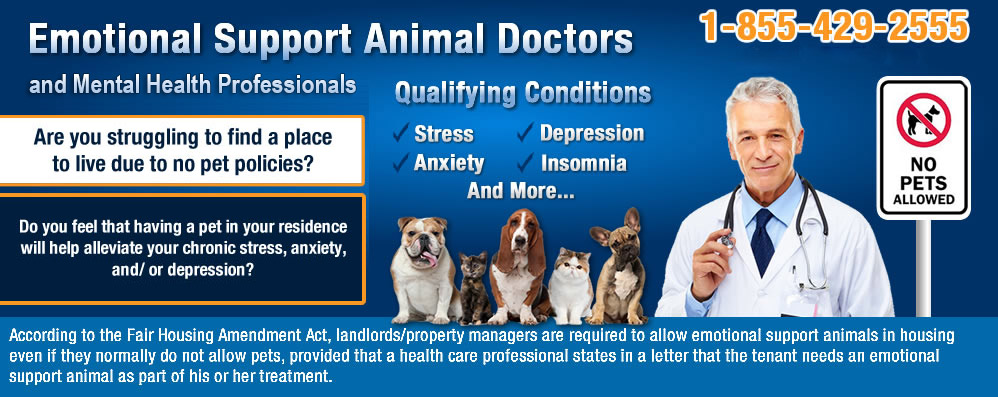Contents
Emotional Support Animal Training
An emotional support animal (ESA) does not require specific training. They just need to do what they do naturally: provide comfort, companionship and love to help you cope with your disease or disorder.
No Training Required
With a proper ESA letter, landlords/property managers are required under the Fair Housing Act to allow your emotional support animal to live with you, even in a “no pets” building. And under the Air Carrier Access Act, airlines are required to allow your pet to fly in the cabin with you.
Although training is not an emotional support animal requirement, it is in your best interest to teach your pet basic good manners. The privileges of taking your ESA into areas restricted for other pets carries with it some responsibilities.
Consider certain key behavior issues that could impact how welcome (or unwelcome) your ESA will be in a public environment:
- Aggression or violence
- Noise levels or causing a disturbance
- Toilet habits
If your emotional support animal is not well socialized or well-behaved in public, there could be consequences. For example, if your ESA poses a threat to other tenants, your landlord/property manager may have a claim to challenge your ESA access. Similarly, if your ESA exhibited aggression towards airline personnel or passengers during a flight, the airline might revoke ESA privileges for future flights.
Another benefit of training your ESA is that training can be a fun bonding experience for both of you.
The Difference Between ESA & Service Animal Training
There is a vast difference between ESA training and service animal training. While there is virtually no training requirements for an ESA, a service animal commonly goes through months or years of rigorous training.
A service animal’s training is focused on developing skills for helping a person with a disability perform specific tasks. Service animals assist people with a number of issues including:
- Visual impairment
- Mobility impairment
- Hearing impairment
Suggested Emotional Support Dog Training
If your emotional support animal is a dog (ESD), suggested, not required, training includes:
- Potty/toilet training
- Come/recall
- Sit
- Stay
- Lie down
- Settle
- Leave it/drop it
Even though most dogs can learn some basic commands in only a few weeks, your dog’s training should never stop. Training is good for your dog’s mental stimulation and helps retain the special bond between you and your ESD.
Getting Approved for Your ESA Letter
For housing and flight privileges, the first step is getting a properly executed ESA letter from a licensed mental health professional. The DOGtor can help you through this process as simply, quickly and economically as possible.
The Online Dogtor
Emotional
Dogs
Companions
Services
Support
Animal
Animal
Florida
Flying
Documentation
Form
California
ADA
Cat
Certificate
Harness
HousingLaws
Iowa
Laws
LetterHousing
LetterPresciption
LetterSample
LetterTemplate
LandlordLetter
Letter
Patch
Prescription
Planes
Vest
Training
Texas
Rights
Requirements
Registry
Registration
RegistrationAmerica
Dog
Dog
Certification
CertificationOnline
Vests
Training
Requirements
Registration
Plane
Licence
Letter
LetterTemplate
Laws
Harness
ForSale
Certificate
California
Breeds













